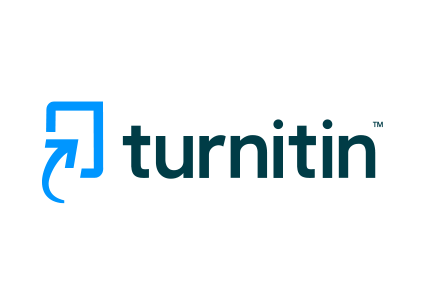DIMENSIONS OF THE SCIENCE LITERACY LEARNING ENVIRONMENT: SYSTEMATIC LITERATURE REVIEW USING THE PRISMA METHOD
Keywords:
Learning Environment, Scientific Literacy, SLR, prismaAbstract
This systematic literature review attempts to analyze various dimensions related to measuring the scientific literacy learning environment. Scientific literacy skills for students are very important in preparing to face the challenges of the modern world. Learning environments that support scientific literacy enable students to develop a holistic understanding of science and technology, including how science can be used to protect the environment and confront global threats. One approach to literature study is Systematic Literature Review (SLR). This research uses a Systematic Literature Review using the Prisma Method with the help of a VOS viewer. This research was limited by only searching for Scopus journal articles published in 2019-2024. Based on one hundred and nineteen (119) articles reviewed, through a systematic literature review process, with an article publication period between 2019 and 2024, the results were that only twenty (20) articles met the criteria and were used as references in this research. Based on the results of the systematic literature review analysis, it was concluded that the dimensions of the scientific literacy learning environment consisted of: science phenomena, science investigations, interest in science in free time, enjoyment of science, teacher support, student cooperation/cohesion, and the social implications of science.
References
Astalini, Kurniawan, D. A., Darmaji, Sholihah, L. R., & Perdana, R. (2019). Characteristics of students’ attitude to Physics in Muaro Jambi High School. Humanities and Social Sciences Reviews, 7(2), 91–99. https://doi.org/10.18510/hssr.2019.7210
Ayasrah, F. T. M., Alarabi, K., Al Mansouri, M., Fattah, H. A. A., & Al-Said, K. (2024). Enhancing secondary school students’ attitudes toward physics by using computer simulations. International Journal of Data and Network Science, 8(1), 369–380. https://doi.org/10.5267/j.ijdns.2023.9.017
Bahtiar, Ibrahim, & Maimun. (2022). Analysis Of Student’ Scientific Literacy Skill in Terms of Gender Using Science Teaching Materials Discovery Model Assisted by Phet Simulation. Jurnal Pendidikan IPA Indonesia, 11(3), 371–386. https://doi.org/10.15294/jpii.v11i3.37279
Bizimana, E., Mutangana, D., & Mwesigye, A. (2022). Students’ Perceptions of the Classroom Learning Environment and Engagement in Cooperative Mastery Learning- Based Biology Classroom Instruction. Education Research International, 2022. https://doi.org/10.1155/2022/5793394
Cai, J., Wen, Q., Lombaerts, K., Jaime, I., & Cai, L. (2022). Assessing students’ perceptions about classroom learning environments: the New What Is Happening In this Class (NWIHIC) instrument. Learning Environments Research, 25(2), 601–618. https://doi.org/10.1007/s10984-021-09383-w
Hanfstingl, B., Gnambs, T., Porsch, R., & Jude, N. (2024). Exploring the association between non-specialised science teacher rates and student science literacy: an analysis of PISA data across 18 nations. International Journal of Science Education, 46(9), 874–892. https://doi.org/10.1080/09500693.2023.2262729
Helms lorenz, M., Editors, R. M. K., & Klassen, R. M. (2023). Effective Teaching Around the World. Eflective Teaching Around the World. https://doi.org/10.1007/978-3-031-31678-4 Kaloka, P. T., Nopembri, S., Yudanto, & Elumalai, G. (2022). a Study of Grade Level and Gender Differences in Attitude Towards Nonlinear Pedagogy. Physical Education
Theory and Methodology, 22(3 S), S124–S131. https://doi.org/10.17309/tmfv.2022.3s.17 Khine, M. S., Fraser, B. J., & Afari, E. (2020). Structural relationships between learning
environments and students’ non-cognitive outcomes: secondary analysis of PISA data. Learning Environments Research, 23(3), 395–412. https://doi.org/10.1007/s10984- 020-09313-2
Long, C. S., Sinclair, B. B., Fraser, B. J., Larson, T. R., & Harrell, P. E. (2022). Preservice teachers’ perceptions of learning environments before and after pandemic-related course disruption. In Learning Environments Research (Vol. 25, Issue 2, pp. 343–357). https://doi.org/10.1007/s10984-021-09376-9
Naiker, M., Sharma, B., Wakeling, L., Johnson, J. B., Kumar, B., Naidu, A., Khan, M. G. M., & Brown, S. (2020). Attitudes towards science among senior secondary students in Fiji. Waikato Journal of Education, 25(1), 57–72. https://doi.org/10.15663/wje.v25i0.704
Najid, A. A., Rahmawati, Y., & Yusmaniar. (2021). Developing students’ attitudes towards chemistry learning through culturally responsive transformative teaching (CRTT). AIP Conference Proceedings, 2331(April). https://doi.org/10.1063/5.0041989
OECD. (2019). PISA 2018 Assessment and Analytical Framework.
Oo, C. Z., Khine, M. S., & San, N. M. H. (2022). A Reliability Generalization Meta-Analysis of “What Is Happening in This Class?” (WIHIC) Questionnaire. Education Sciences, 12(12). https://doi.org/10.3390/educsci12120929
Panos, E., & Ruiz Gallardo, J. R. (2021). Attitude toward informal science in the early years and development of Leisure Time in Science (LeTiS), a pictographic scale. Journal of Research in Science Teaching, 58(5), 689–720. https://doi.org/10.1002/tea.21675
Rahmatiah, R., Rokhmat, J., Jufri, A. W., Gunawan, & Sukarso, A. (2024). Validating Test of Science-Related Attitudes (TOSRA) For Elementary Students In Mataram, Indonesia. International Journal of Contextual Science Education, 1(1), 22–28. https://doi.org/10.29303/ijcse.v1i1.553
Rijken, P. E., & Fraser, B. J. (2024). Effectiveness of project‑based mathematics in first‑year high school in terms of learning environment and student outcomes. Learning Environments Research.
Sahyar, Bunawan, W., & Yanti, J. (2020). Analysis of competency level for wave science in general physics-based on literacy science in pisa. Journal of Physics: Conference Series, 1485(1). https://doi.org/10.1088/1742-6596/1485/1/012012
Sangkala, N. R., & Doorman, L. M. (2019). The influence of inquiry-based learning on Indonesian students’ attitude towards science. Journal of Physics: Conference Series, 1321(3). https://doi.org/10.1088/1742-6596/1321/3/032123
Stein, S., & Klosterman, P. (2020). Nature of learning environment in concurrent enrollment mathematics classrooms: a cluster analysis. Learning Environments Research, 23(2), 217–234. https://doi.org/10.1007/s10984-019-09295-w
Suarez-Mesa, A. M., & Gomez, R. L. (2024). Does teachers’ motivation have an impact on students’ scientific literacy and motivation? An empirical study in Colombia with data from PISA 2015. Large-Scale Assessments in Education, 12(1), 1–28. https://doi.org/10.1186/s40536-023-00190-8
Vygotsky, L. S. (1978). Mind in Society: The Development of Higher Psychological Processes.
Harvard University Press.










